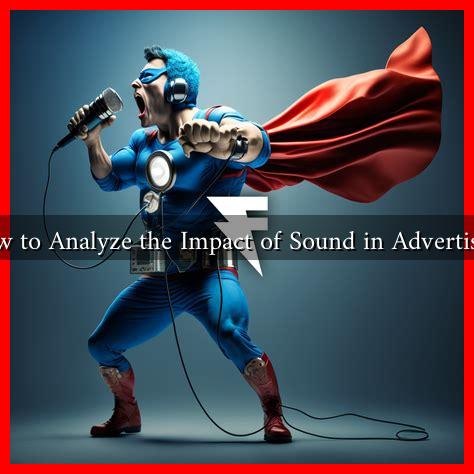-
Table of Contents
- How to Analyze the Impact of Sound in Advertising
- The Role of Sound in Advertising
- Understanding the Psychological Impact of Sound
- Methods for Analyzing Sound in Advertising
- 1. A/B Testing
- 2. Surveys and Focus Groups
- 3. Analyzing Social Media Engagement
- Case Studies: Successful Use of Sound in Advertising
- Conclusion
How to Analyze the Impact of Sound in Advertising
Sound plays a crucial role in advertising, influencing consumer behavior and brand perception. From jingles to voiceovers, the auditory elements of an advertisement can evoke emotions, create memorable experiences, and ultimately drive sales. This article explores how to analyze the impact of sound in advertising, providing insights into its effectiveness and offering practical methods for evaluation.
The Role of Sound in Advertising
Sound in advertising serves multiple purposes, including:
- Emotional Engagement: Sound can evoke feelings and set the mood, making the advertisement more relatable.
- Brand Recognition: Unique sounds or jingles can enhance brand recall and recognition.
- Information Delivery: Voiceovers can convey messages clearly and effectively, ensuring that the audience understands the product or service.
- Creating Atmosphere: Background music can create a specific ambiance that aligns with the brand’s identity.
Understanding the Psychological Impact of Sound
Research shows that sound can significantly affect consumer behavior. According to a study published in the Journal of Consumer Research, background music can influence the amount of time consumers spend in a store and their purchasing decisions. Here are some psychological aspects to consider:
- Tempo: Fast-paced music can energize consumers, while slower tempos can create a relaxed shopping environment.
- Volume: The loudness of sound can either attract attention or drive consumers away, depending on the context.
- Familiarity: Familiar sounds can create a sense of comfort, making consumers more likely to engage with the advertisement.
Methods for Analyzing Sound in Advertising
To effectively analyze the impact of sound in advertising, consider the following methods:
1. A/B Testing
A/B testing involves creating two versions of an advertisement—one with sound and one without. By measuring engagement metrics such as click-through rates, conversion rates, and time spent on the ad, marketers can determine the effectiveness of sound in their campaigns.
2. Surveys and Focus Groups
Gathering qualitative data through surveys and focus groups can provide insights into how consumers perceive sound in advertisements. Questions can focus on:
- Emotional responses to the sound
- Memorability of the advertisement
- Overall brand perception
3. Analyzing Social Media Engagement
Monitoring social media platforms for consumer reactions to advertisements can provide valuable feedback. Look for:
- Comments about the sound or music used
- Shares and likes that indicate positive reception
- Sentiment analysis to gauge overall feelings towards the ad
Case Studies: Successful Use of Sound in Advertising
Several brands have successfully leveraged sound in their advertising campaigns:
- McDonald’s: The iconic “I’m Lovin’ It” jingle has become synonymous with the brand, enhancing recall and emotional connection.
- Apple: Apple’s use of minimalist sound design in their commercials creates a sleek and modern atmosphere that aligns with their brand identity.
- Coca-Cola: The “Taste the Feeling” campaign effectively uses sound to evoke feelings of happiness and togetherness, reinforcing brand loyalty.
Conclusion
Analyzing the impact of sound in advertising is essential for marketers aiming to create effective campaigns. By understanding the psychological effects of sound, employing various analysis methods, and learning from successful case studies, brands can harness the power of sound to enhance consumer engagement and drive sales. As the advertising landscape continues to evolve, sound will remain a vital component in crafting memorable and impactful messages.


